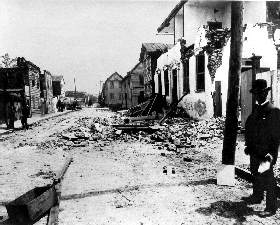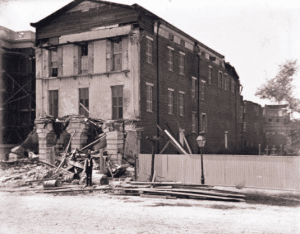
The USGS recently updated their U.S. National Seismic Hazard Maps, which reflect the best and most current understanding of where future earthquakes will occur, how often they will occur and how hard the ground will likely shake as a result.
According to USGS officials, the eastern U.S. has the potential for larger and more damaging earthquakes than considered in previous maps and assessments. As one example, scientists learned a lot following the magnitude 5.8 earthquake that struck Virginia in 2011. It was among the largest earthquakes to occur along the east coast in the last century, and helped determine that even larger events are possible.
Estimates of earthquake hazards near Charleston, SC, have also gone up due to the assessment of earthquakes in the state, according to USGS experts. Geologically, Charleston lies in one of the most seismically active areas in the eastern United States.
Scientists have also concluded that 16 states have a relatively high likelihood of experiencing damaging ground shaking. These states have historically experienced earthquakes with a magnitude 6 or greater. South Carolina made that particular list.
Others included: Alaska, Arkansas, California, Hawaii, Idaho, Illinois, Kentucky, Missouri, Montana, Nevada, Oregon, Tennessee, Utah, Washington, and Wyoming.
The last time the Charleston area experienced a major earthquake was August 31, 1886. It claimed the lives of approximately 100 people. The initial shock lasted nearly one minute. The earthquake had a magnitude of 7.3 and was felt over 2.5 million square miles, from Cuba to New York, and Bermuda to the Mississippi River. Structural damage extended several hundred miles to cities in Alabama, Ohio, and Kentucky.

At the time of the earthquake, many of the residents of Charleston thought it was a calamity that struck the entire world. Many residents were surprised when they discovered it was principally their area where the majority of severe damage occurred.
The Great Southeast Shakeout is October 16 at 10:16 a.m. The event helps people practice and prepare for an earthquake in their area. You can register and encourage others to register NOW.
- Nearly Century-Old St. Stephen School To Be Torn Down - March 20, 2024
- BCSD Approves $10K Bonus For Special Education Teachers - March 19, 2024
- WakeUp Carolina Celebrates Moncks Corner Grand Opening With Ribbon Cutting - March 12, 2024













Recent Comments